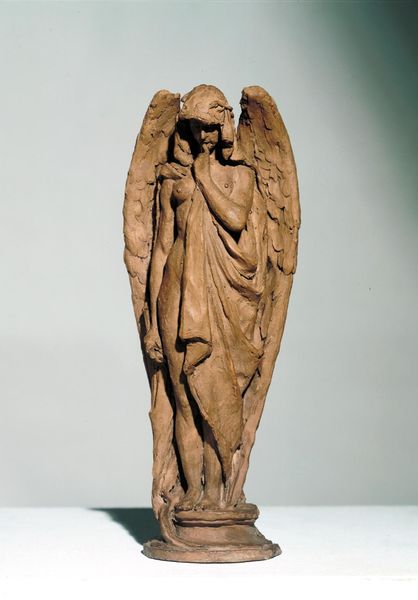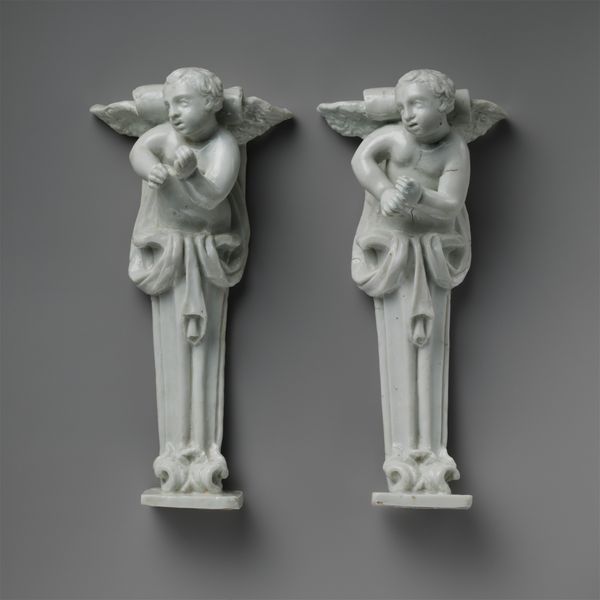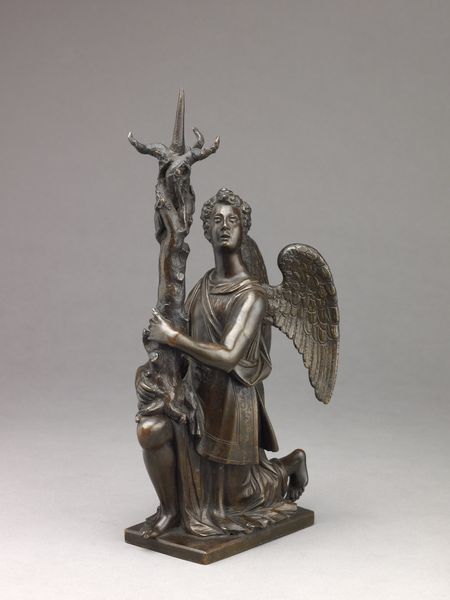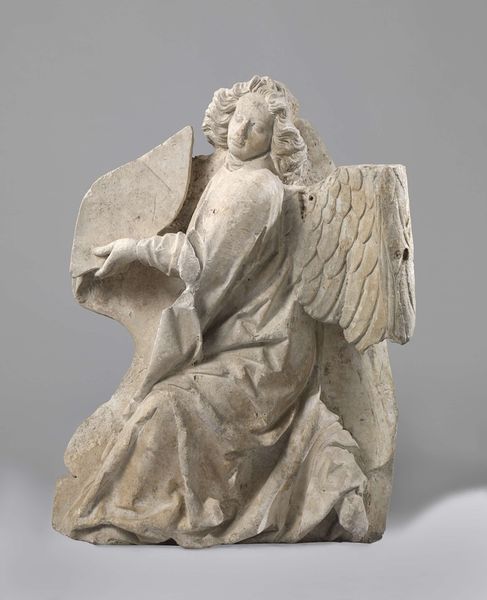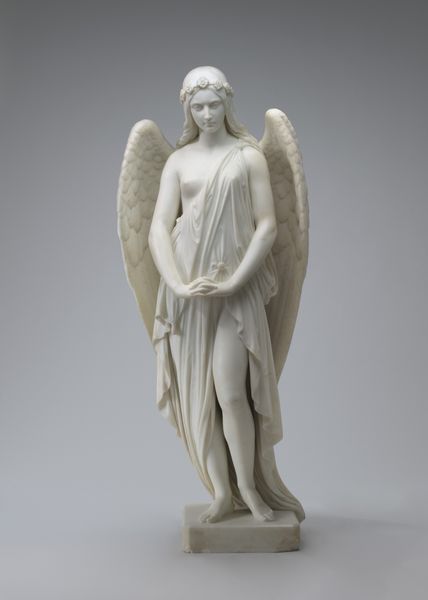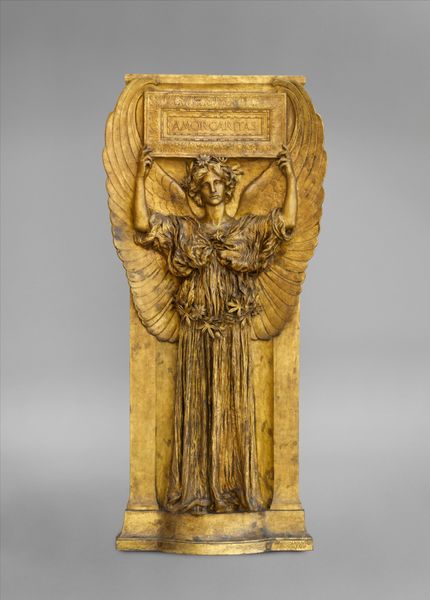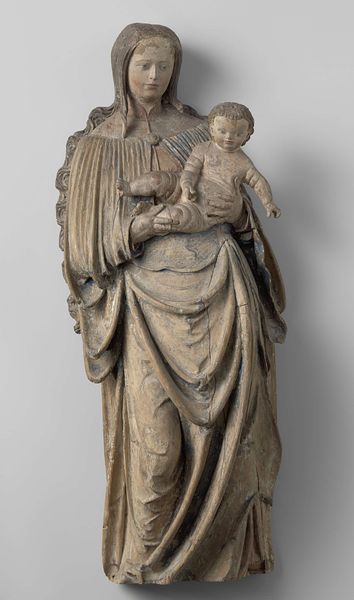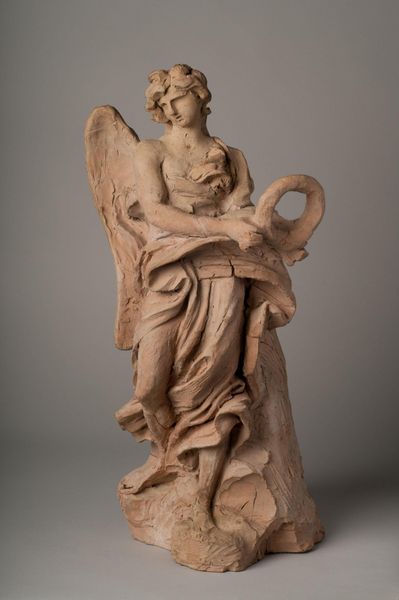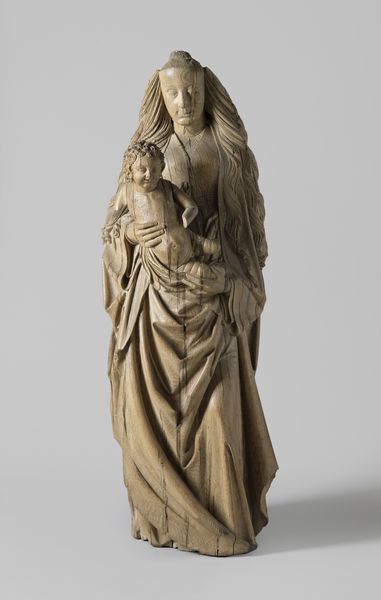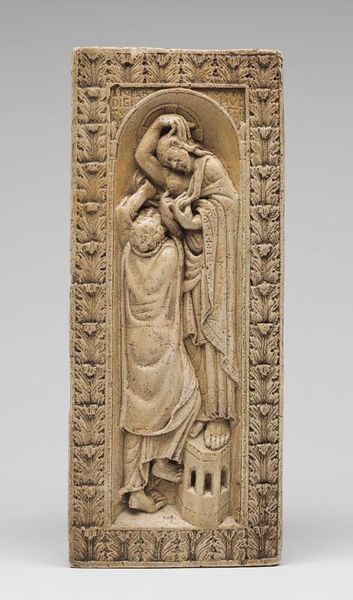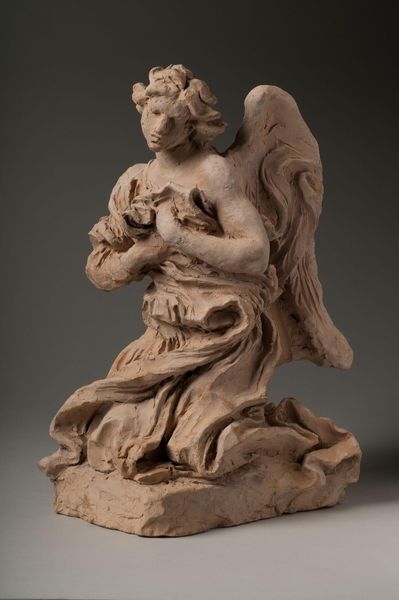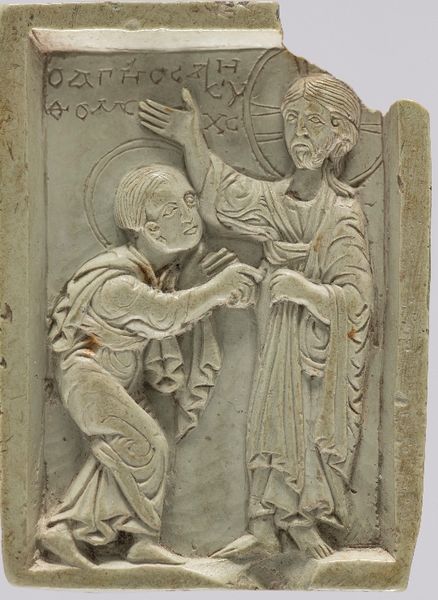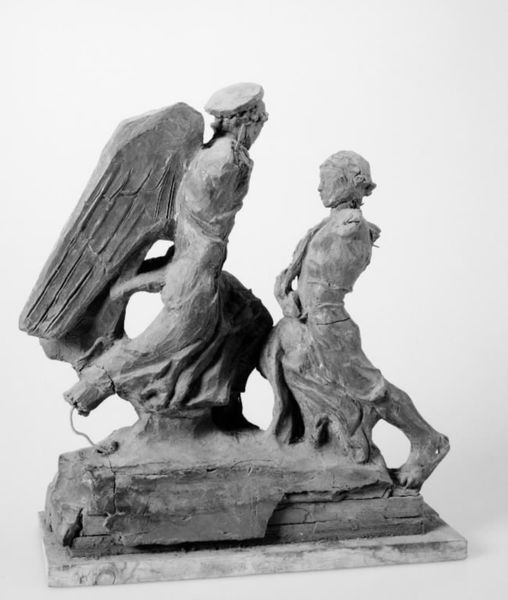
carving, sculpture, marble
#
medieval
#
carving
#
sculpture
#
figuration
#
sculpture
#
marble
Dimensions: 96 cm (height) x 34 cm (width) x 36 cm (depth) (netto)
Curator: Looking at these sculptures, my first thought is one of subdued reverence. Their grey surfaces and the simple lines lend a humble atmosphere, even in their fragmentary state. Editor: We are looking at a pair of sculptures known as "To bedende engle", or "Two Praying Angels", dated roughly between 1446 and 1455, placing them squarely in the medieval period. They’re currently held at the SMK, the National Gallery of Denmark. What's interesting here is the tension inherent in depicting devotional subjects using earthly materials and, presumably, within a context of power structures. How do you think this work speaks to questions of class or gender within the religious establishment of the time? Curator: That's an excellent point. The gender of the angels is purposefully ambiguous, or perhaps androgynous, blurring lines of patriarchal religious figures. And the material—it's said to be carved from marble, although weathered—suggests accessibility of devotion, rendered imperfect by mortal hands. Editor: The deliberate carving, the textures, and the very act of creation must be acknowledged. It’s compelling how such seemingly fragile forms convey a stoic quality and how religious spaces dictate such emotional impact for an artwork, which inevitably shapes the viewer’s interaction with them, regardless of any intentionality. Curator: Indeed. This also underscores how cultural context drastically alters the meaning attributed to these pieces over time, and prompts conversations around power, representation and the continuing influence of religious structures. How these works were used and what messages the authorities wanted them to send says so much about how society looked then. Editor: I see these weathered figures now and am made all the more aware of the forces around artwork production that dictated meaning and representation so deliberately, making its accessibility, and potential challenges to authority so profound and telling. Curator: Ultimately, whether or not they overtly challenged those structures, their existence preserves something timeless: A testament to collective hope, or to those lost in history that deserve a light shone on them. Editor: Yes, by studying its role through those institutional frameworks, we give power back to the voices of both creator, and the viewer throughout all of history.
Comments
No comments
Be the first to comment and join the conversation on the ultimate creative platform.
